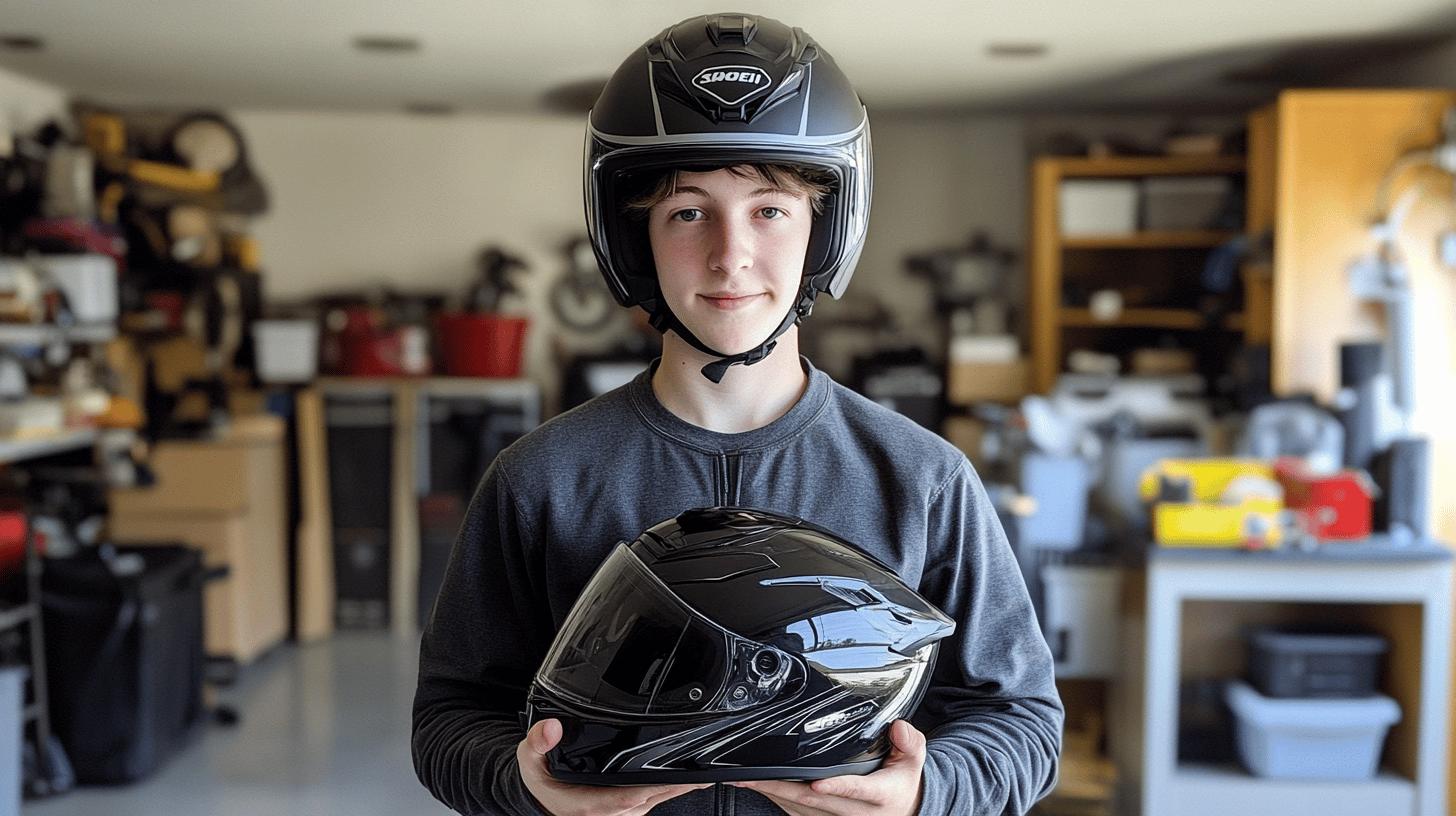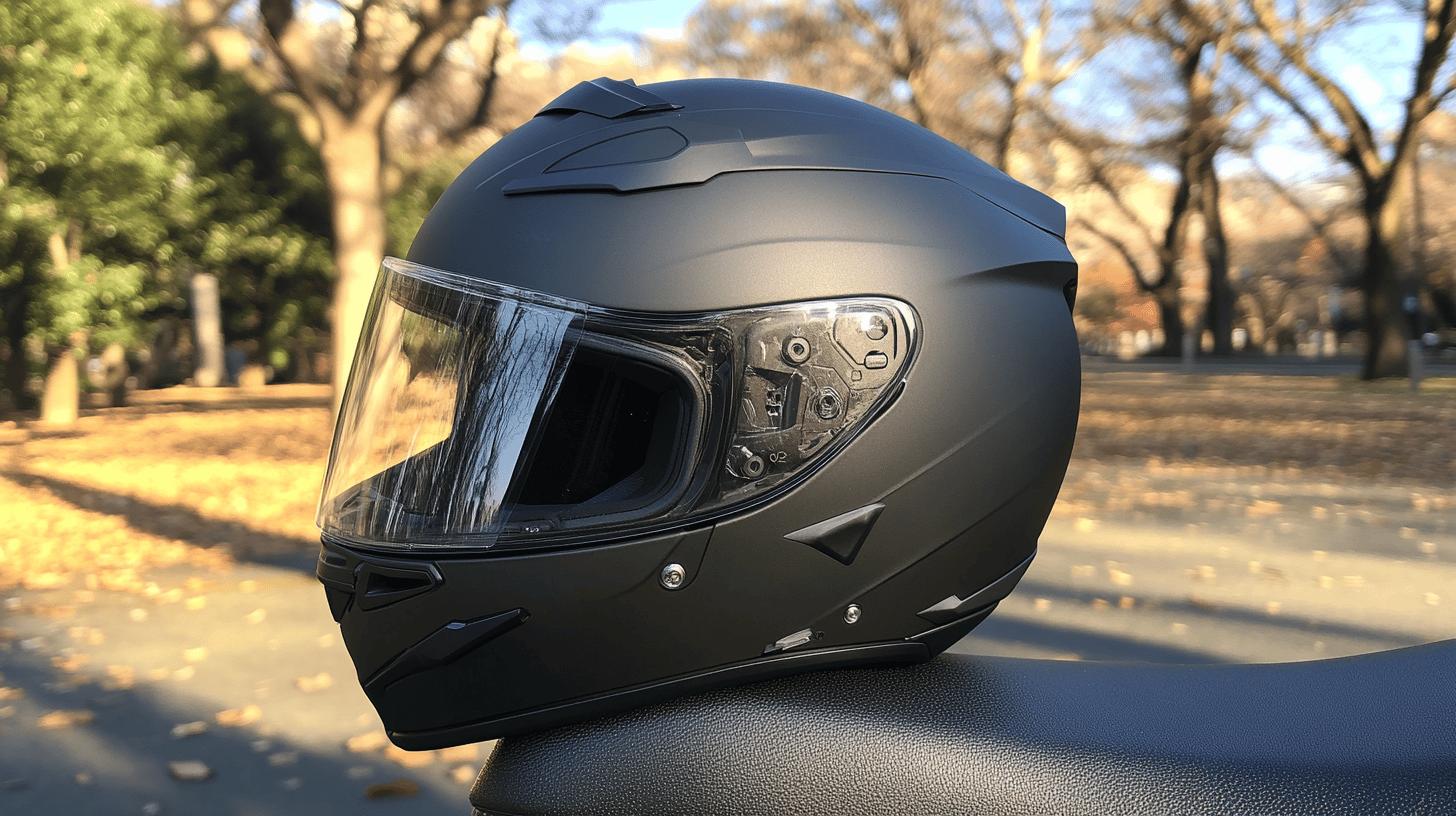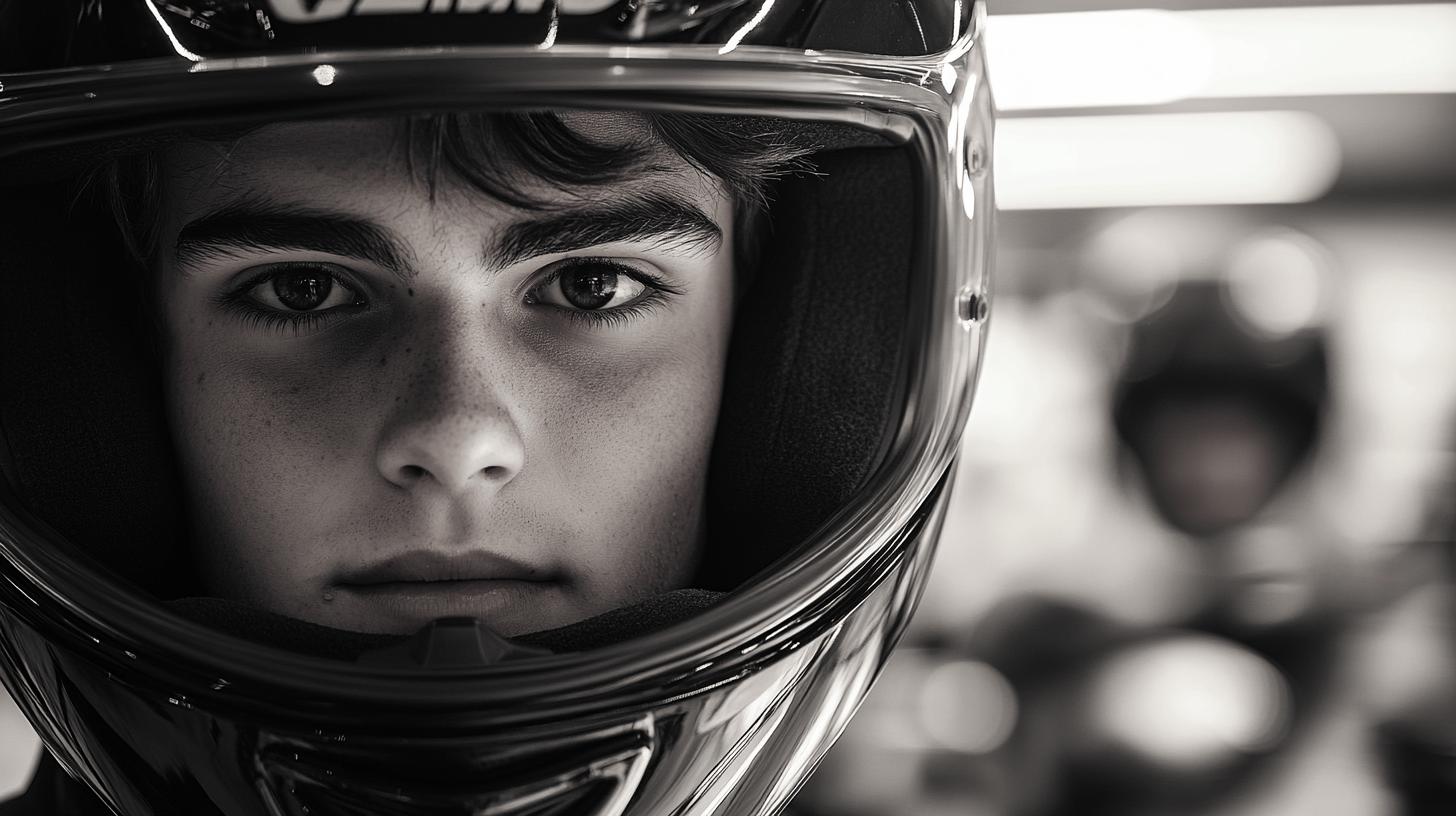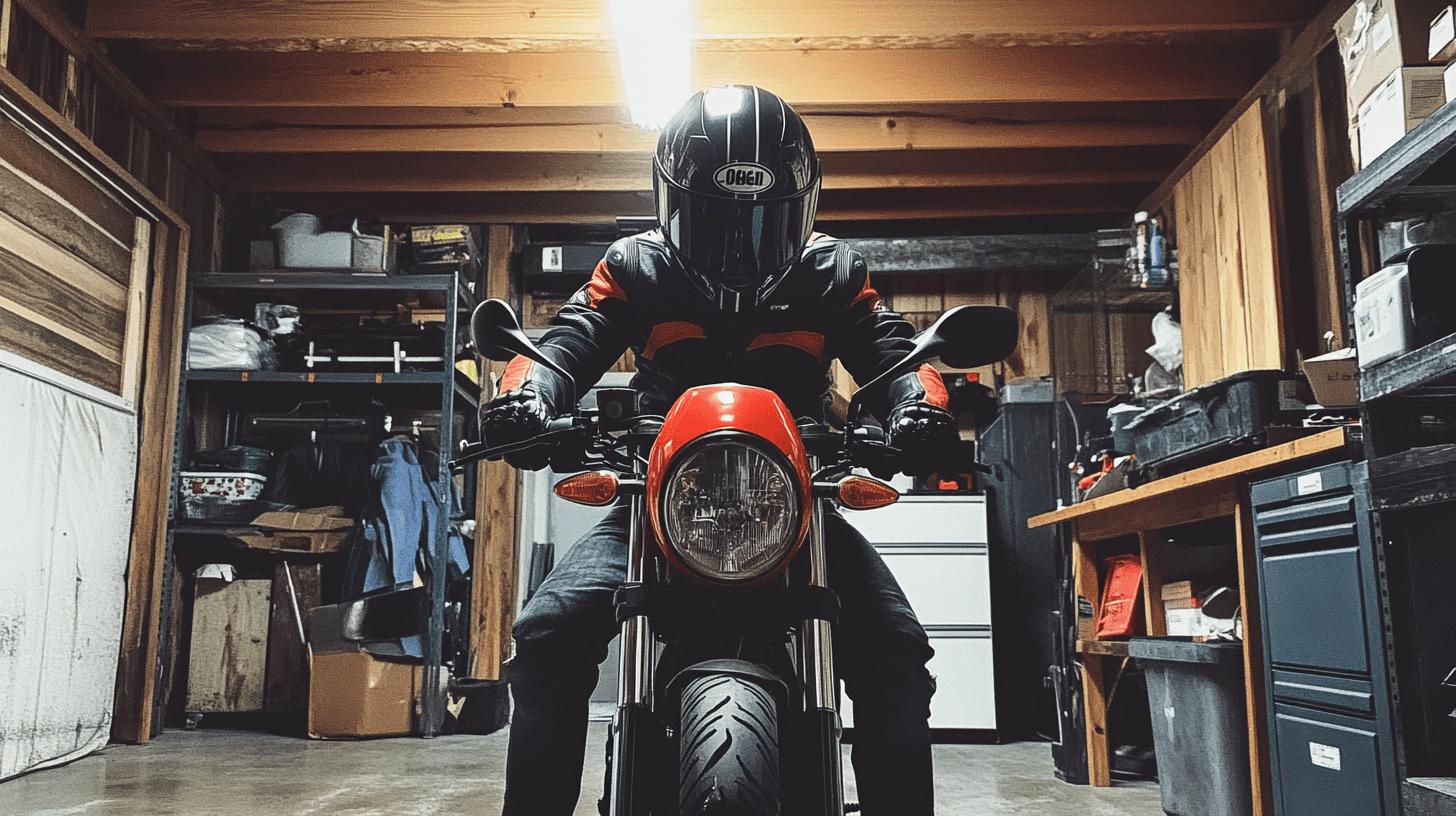Is the roar of the wind drowning out the thrill of your ride? Many riders find that helmets, designed primarily for safety, often neglect noise reduction. Imagine enjoying the hum of your motorcycle without the ear-splitting wind noise.
Today’s technology is shifting gears to prioritize a quieter ride, with advancements such as Advanced Noise Control™ shaping the future of helmet design.
In this article, we explore what makes a helmet truly quiet, featuring the best in class options like the Shoei RF-1400, and delve into how you can enhance your riding experience with the right choice.
Understanding Quiet Motorcycle Helmet Technology

What is the quietest motorcycle helmet today? The Shoei RF-1400 stands out as the leading contender, renowned for its exceptional noise reduction capabilities. This helmet is engineered with advanced aerodynamics and strategic padding placement, effectively minimizing wind noise without sacrificing comfort.
The demand for quieter helmets has grown, prompting manufacturers to focus on soundproofing techniques alongside traditional safety and aerodynamic features. The RF-1400 exemplifies this evolution, showcasing how technology can enhance the riding experience by significantly reducing noise levels.
Key noise reduction technologies in modern helmets include:
- Advanced Noise Control™: This technology actively reduces ambient noise levels, ensuring a quieter ride.
- Innovative Shell Designs: Helmets with streamlined shapes minimize turbulence, which is a major source of wind noise.
- Strategic Padding Placement: Proper padding reduces noise intrusion by sealing gaps where sound could enter.
- Dual-Layer EPS Liners: These liners absorb sound vibrations, contributing to lower noise levels inside the helmet.
- Aerodynamic Vent Systems: Efficient vent systems manage airflow, reducing the noise caused by air resistance.
A helmet’s quietness is not solely determined by technology but also by its fit and aerodynamic properties. Proper fit ensures that the helmet seals well around the rider’s head, preventing noise from seeping in. Additionally, a helmet designed with aerodynamics in mind can further reduce noise by decreasing wind resistance and channeling airflow more efficiently.
Thus, when selecting a helmet, riders should prioritize a model that balances noise reduction with a snug fit and aerodynamic design. This combination not only enhances comfort but also significantly improves the overall riding experience by reducing fatigue and increasing focus on the road.
Top Quiet Motorcycle Helmets for 2024

Selecting the right helmet for noise reduction is crucial for enhancing rider comfort and safety. Noise not only distracts but also contributes to fatigue over long rides, making the quest for the quietest helmet a priority for many motorcyclists. The market in 2024 offers an impressive array of helmets designed with advanced noise reduction technologies.
- Shoei RF-1400: A top contender, it excels in noise reduction through its aerodynamic design and strategic padding enhancements. Its ability to minimize wind noise sets it apart from its predecessors.
- Schuberth C5: Known for its integrated advanced noise control features, this helmet offers excellent sound isolation, making it ideal for long-distance touring.
- Sena Stryker: This helmet combines noise reduction with integrated Bluetooth audio features, providing both quietness and communication capabilities for connected rides.
- HJC RPHA-91 Series: Continuously praised for its superior noise isolation, this series is celebrated for maintaining a quiet ride, supported by its innovative shell design.
- Shark EVO GT: A modular helmet, it offers versatility and reduces wind noise effectively, providing the benefits of both full-face and 3/4 helmets.
- Shoei Neotec 3: Its modular design and aerodynamics contribute to its low noise levels, making it a favorite among touring riders.
While quietness is a significant factor, it’s important to consider additional features such as safety ratings and integrated communication systems when selecting a helmet. The balance between noise reduction and these features ensures not only a quieter ride but also a safer and more enjoyable journey. Riders must evaluate their specific needs to find a helmet that offers the best combination of quietness, safety, and connectivity.
Features That Make a Helmet Quiet

What makes a motorcycle helmet quiet? The design features that contribute to a helmet’s quietness are paramount in reducing wind noise and enhancing rider comfort. A well-designed helmet can significantly lower noise levels, allowing riders to focus better and enjoy longer rides without fatigue.
- Neck Padding: This feature provides a snug fit around the neck area, reducing gaps where wind can enter and create noise.
- Shell Shape: Aerodynamic shell designs minimize wind turbulence, a primary contributor to wind noise.
- Material Composition: High-quality materials like carbon fiber help absorb sound vibrations, reducing the noise inside the helmet.
- Ventilation Systems: Carefully designed vents manage airflow without allowing excessive noise intrusion.
- Chin Curtain: A chin curtain can block wind from entering the helmet’s lower section, further reducing noise levels.
These features work together to create a quieter helmet by addressing different aspects of noise generation. Neck padding and chin curtains seal potential entry points for wind, while the shell shape and materials contribute to a smoother aerodynamic profile.
This reduces turbulence, which is a major source of noise. Additionally, well-designed ventilation systems provide airflow without compromising noise control. Together, these elements form a cohesive strategy to enhance the riding experience, allowing for a quieter and more enjoyable journey on the road.
Comparing Quietest Modular and Full-Face Helmets

What differentiates modular and full-face helmets in terms of noise reduction? Modular helmets, such as the Shark EVO GT and Shoei Neotec 3, offer versatility by allowing the chin bar to flip up, providing convenience and flexibility.
In contrast, full-face helmets like the Shoei RF-1400 and Schuberth C5 are designed with a fixed chin bar, often resulting in better aerodynamics and noise isolation. Modular helmets are favored for their adaptability, while full-face helmets excel in providing a quieter ride due to their streamlined design.
Modular Helmets
For those seeking versatility, modular helmets present a compelling option. The Shark EVO GT stands out with its innovative design, reducing wind noise effectively while allowing riders to switch between a full-face and open-face configuration. This adaptability makes it a popular choice for those who value convenience and noise control.
Similarly, the Shoei Neotec 3 is renowned for its aerodynamic design and enhanced ventilation, offering impressive noise reduction while maintaining the flexibility of a modular helmet. These helmets provide the best of both worlds by combining noise reduction features with the comfort of a convertible design.
Full-Face Helmets
Full-face helmets are often the top choice when it comes to superior noise isolation. The Shoei RF-1400 is celebrated for its advanced aerodynamic shell and strategic padding, which work together to minimize wind noise, making it one of the quietest full-face helmets available.
The Schuberth C5 further enhances noise reduction with its precision-engineered design, ensuring a snug fit and optimal sound isolation. These helmets are ideal for riders who prioritize a quieter ride and are willing to trade off some flexibility for enhanced noise control and safety.
| Helmet Type | Noise Reduction Features |
|---|---|
| Modular | Chin bar versatility, aerodynamic design, enhanced ventilation |
| Shark EVO GT | Convertible design, effective wind noise reduction |
| Shoei Neotec 3 | Aerodynamic shape, superior ventilation |
| Full-Face | Fixed chin bar, streamlined design, superior aerodynamics |
| Shoei RF-1400 | Advanced shell, strategic padding |
| Schuberth C5 | Precision engineering, snug fit |
Both helmet types offer unique benefits in noise reduction, with modular helmets providing versatility and full-face helmets excelling in aerodynamics and noise control.
Buying Guide for Quiet Motorcycle Helmets

When selecting a quiet motorcycle helmet, the primary considerations include fit, materials, and additional features. An optimal fit is crucial as it effectively seals out noise, while materials such as carbon fiber contribute to lightweight noise reduction. Integrated Bluetooth and other technological features also enhance the riding experience by offering connectivity without compromising on quietness.
- Assess the Fit: Ensuring the helmet fits snugly around your head is essential. A well-fitted helmet minimizes gaps where wind noise can seep in, providing a quieter ride.
- Choose Quality Materials: Look for helmets made with advanced materials like carbon fiber. These not only reduce weight but also help in dampening sound vibrations.
- Evaluate Aerodynamics: Helmets with aerodynamic designs are more effective at reducing wind resistance and noise, making them ideal for quiet riding.
- Consider Integrated Features: Helmets with built-in Bluetooth or communication systems offer convenience. However, ensure these features do not compromise the helmet’s noise reduction capabilities.
- Check Safety Ratings: While seeking quietness, don’t overlook safety. Helmets that meet or exceed safety standards provide a balance between protection and noise reduction.
Among the top recommendations are the Shoei RF-1400 and HJC RPHA-91, both renowned for their superior noise reduction and comfort. Trying different models before purchasing is crucial, as personal comfort and fit play significant roles in achieving the quietest ride possible. This hands-on approach ensures that riders select a helmet tailored to their specific needs, offering both quietness and safety in every journey.
User Reviews and Insights on Quiet Helmets

User reviews play a critical role in evaluating the performance of quiet motorcycle helmets. These first-hand experiences provide prospective buyers with valuable insights into how well a helmet reduces noise and enhances comfort during rides.
- Shoei RF-1400: Frequently highlighted for its exceptional noise reduction, users commend its ability to minimize wind noise, attributing this to its aerodynamic design and strategic padding.
- Schuberth C5: Praised for both noise isolation and comfort, consumers appreciate its snug fit, which effectively seals out unwanted noise and enhances the overall riding experience.
- Importance of Fit: Numerous reviews emphasize that a helmet’s fit is pivotal in noise reduction. A well-fitted helmet prevents wind from entering and causing turbulence.
- Bluetooth Integration: Helmets with integrated Bluetooth, like the Sena Stryker, receive positive feedback for maintaining quietness while offering connectivity, enhancing the ride without compromising sound isolation.
- Ventilation Feedback: Effective ventilation that doesn’t contribute to noise is a common point of praise, with users favoring designs that manage airflow without increasing wind noise.
These insights help guide new buyers in making informed decisions by highlighting the aspects that matter most in achieving a quieter ride. Understanding the importance of fit and the impact of additional features like Bluetooth can help riders select helmets that meet their specific needs, balancing quietness with other crucial factors such as comfort and connectivity.
Final Words
Evaluating helmet technology reveals the critical role of noise reduction features in enhancing riding comfort. Innovative options like the Shoei RF-1400 exemplify advancements in design, balancing aerodynamics, and noise control.
Assessing modular and full-face helmets showcases how design impacts sound isolation. A comprehensive buying guide highlights the importance of fit and materials.
User reviews reinforce these points, guiding buyers towards making informed decisions. Understanding what is the quietest motorcycle helmet enhances safety and enjoyment on the road.
FAQ
What is the quietest motorcycle helmet for 2024?
The Shoei RF-1400, Schuberth C5, and Sena Stryker rank among the quietest. Each offers advanced noise reduction technologies and aerodynamic designs for superior sound dampening.
What is the best helmet to block wind noise?
The Shoei RF-1400 excels at blocking wind noise through its improved aerodynamics and soundproofing features. It is favored among riders for its noise reduction capabilities.
Are more expensive helmets quieter?
More expensive helmets often incorporate advanced materials and technology that enhance noise reduction, though this is not universal. Evaluating individual helmet models for specific features is recommended.
Are full-face helmets quieter than modular ones?
Full-face helmets generally provide better noise isolation due to their sealed design and aerodynamic advantages compared to modular helmets.
How to make a motorcycle helmet quieter?
To reduce helmet noise, ensure a snug fit, use earplugs, and consider adding neck padding or a wind collar to minimize wind intrusion.
What’s the quietest motorcycle helmet under $200-$300?
For under $300, the Bell Qualifier DLX MIPS offers effective noise reduction and comfort, making it a popular budget-friendly choice.
What features make a motorcycle helmet quiet?
Quiet helmets often include features like neck padding, aerodynamic shell designs, advanced materials, and noise-canceling linings to reduce wind noise.
Is the Sena Stryker helmet noise-canceling?
Yes, the Sena Stryker includes Active Noise Control™ technology, helping to reduce wind and road noise during rides.
What are the top quiet motorcycle helmets for 2024?
The leading helmets for noise reduction in 2024 are:
- Shoei RF-1400: Advanced aerodynamics and quietness.
- Schuberth C5: Integrated noise control.
- Sena Stryker: Active noise-canceling with Bluetooth.
- Shoei Neotec II: Versatile, quiet modular design.
- HJC RPHA 91: Superior noise isolation.
- Bell Qualifier DLX MIPS: Budget-friendly noise reduction.
How do helmet design features affect noise levels?
Helmet features like shell shape, neck padding, and materials impact noise management. Aerodynamics and strategic padding placement reduce turbulence and wind noise.

Mark Anderson is a trusted expert with over 25 years of riding experience. At 56, his deep knowledge of long-distance touring and participation in major motorcycle rallies makes him a reliable source for gear recommendations on ProtectiveGearz. Mark’s decades of firsthand experience ensure his advice is authoritative and valuable to riders seeking expert guidance.



